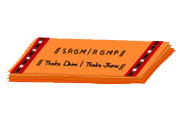Lyrics and Meanings (Bhajan)
Bhajans are basically musical prayers. They are sung with devotion in relation to goddesses and gods in the Hindhu pantheon. The name Bhajan is given to any type of Indian devotional song in general.view more
Lyrics and Meanings (Bhajan)
Bhajans are basically musical prayers. They are sung with devotion in relation to goddesses and gods in the Hindhu pantheon. The name Bhajan is given to any type of Indian devotional song in general. The word ‘Bhaj’ meaning to serve or to love the divine is the root for the term Bhajan. Having no fixed form, it may be as simple as a set of verses or as sophisticated as the classical musical notes.
A bhajan is normally lyrical, expressing love, devotion and surrender to the divine. Hence its importance to the Bhakthi movement that spread from the south of India throughout the entire subcontinent is paramount. The subject of bhajans covers a wide range of topics like descriptions of gods, episodes from scriptures, the teachings of saints and social conditions also, all related to the divine.
Bhajan singing has acquired different traditions with respect to the different regions of the country they evolved from. The traditional South Indian form is called Sampradhāya Bhajan. The compositions of the Nāyanārs and Āzhwārs of Thamizhnāḍu and the Dhāsas of Karṇāṭaka and many others formed the core of this tradition. The kīrthan as or songs in the Haridhāsa tradition are related to the Bhajan form. From the northern part of the continent, Nānak, Kabīr, Mīrā, Sūrdhās and Thulasīdhās are notable composers. Bhajans by these and a few others like Narotthama Dhās are considered to be classic. The languages of their work are influenced by several dialects of Hindi and are widely enjoyed even among those who do not speak Hindi. Other than the above, traditions of Bhajan such as Nirguṇi, Gorakhanāthi, Vallabhapanthi, Aṣhṭachhāp, Madhhura-Bhakthi etc. each have their own repertoire and methods of singing.
It is interesting to note that the Dhrupad style in Hindhusthāni music and the Sūfi qawwāli are inspired by the Bhajan form. In the present period of time, the Bhajan form influences all age groups and is considered the easiest way to connect to the Divine.
| 1 | Chaliye Kunjana Mo | click here |
| 2 | Ramaiya Bin Nīndh | click here |
| 3 | Rusali Rādhhā | click here |
| 4 | Śhrī Rāmachandra | click here |












